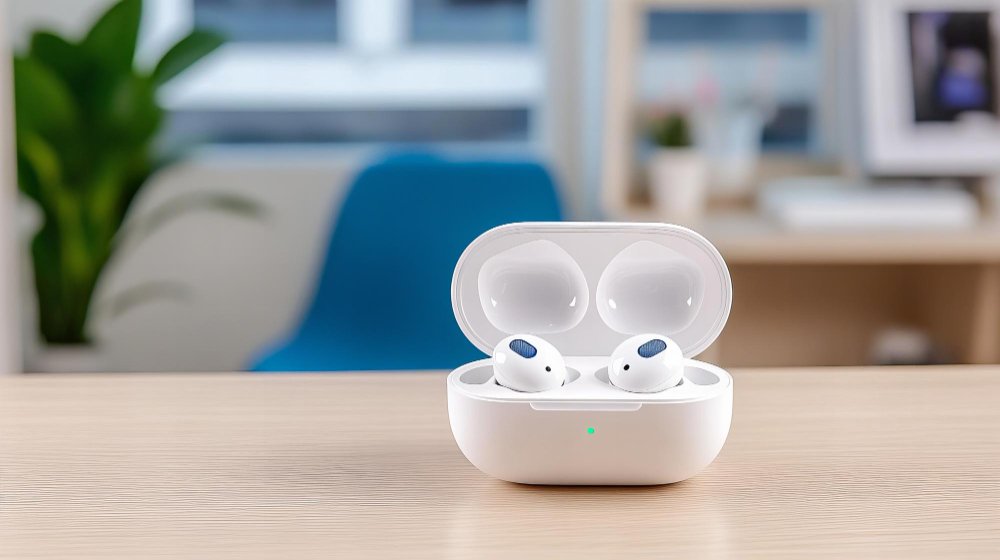Techgadgetupdate – Can Deer Hear Earbuds? Wildlife Sound Perception. Ever thought if deer can pick up sounds from our earbuds? Or do they ignore the world of technology? This question looks into how deer hear sounds compared to us. They can see five times better and hear certain sounds we can’t. It’s important to know how technology might affect their natural ways.
We’ll see if deer can hear earbuds and what it means for people who love the outdoors or hunt. Let’s dive into this fascinating topic together.
The Auditory Range of Deer
Deer rely heavily on their hearing to survive. They use their senses to spot predators and find their way. Their ability to hear shows how well they fit into their world.
Understanding Deer’s Hearing Capabilities
Deer have amazing hearing, covering sounds from 0.115 kilohertz to 64 kHz. They are best at hearing sounds between 4 to 8 kHz. This lets them hear sounds from far away with great accuracy.
According to Judge Holdford, deer’s hearing is their main way to stay safe. It often beats their sense of smell and sight when it matters most.
Comparing Deer and Human Hearing Frequencies
Deer and humans hear things differently. Humans do best with sounds between 2 to 5 kHz. Deer can hear much higher sounds, up to 54,000 hertz, while humans only go up to 20,000 hertz.
This shows why deer have such sharp hearing. It helps them pick up sounds we can’t hear, giving them an edge in their environment.
Can Deer Hear Earbuds?
Let’s look into if deer can hear earbuds. Earbuds produce sound frequencies that are much louder than what deer normally hear in the wild. These sounds can go above 85 dB, which might scare deer because they’re not used to such loud noises.
The Impact of Sound Frequencies on Deer
Deer can tell sounds apart, which helps them stay alert. But the sounds they hear are usually soft and important for their survival. The loud sounds from earbuds can mess with their natural alertness, making them stressed or react in ways they wouldn’t normally.
Human Sounds Versus Natural Environment Sounds
There are different views on whether deer can hear earbuds. About 60% of people think it’s okay to use earbuds while hunting. They mention using things like iPods and phones in the wild. But, there are others who think it’s better to connect with nature without using technology.
Earbud Sound Frequencies and Their Effect on Wildlife
Earbud sound frequencies can affect wildlife in big ways. In nature, sound changes because of wind, land shape, and air conditions.
How Sound Frequencies Travel in Nature
In the wild, sounds can go far, affected by temperature and humidity. Low sounds, like from audiobooks or animals, go farther than high sounds. This helps animals, like deer, talk to each other and sense dangers. But when we add earbud sounds, it can change how animals see their world, causing them stress or confusion.
Potential for Disturbance to Wildlife from Personal Audio Devices
Using earbuds in nature can make noise pollution that harms animals. It can hide sounds deer need to survive, like warnings of danger or other animals. Deer are very sensitive to sound and can get scared or run away easily.
Noise Pollution and Its Impact on Wildlife
Wildlife faces a big challenge from noise pollution, especially deer. As cities grow and industrial activities increase, noise levels rise. It’s important to know where this noise comes from to understand its effects on wildlife.
Sources of Wildlife Noise Pollution
Many human activities cause noise, like traffic, building, and fun activities. Things like lawn mowers and cars make a lot of noise. This noise affects both rural and city areas.
It can mask the sounds deer need to survive. This is a big problem for deer that rely on hearing to stay safe and find friends.
The Effects of Prolonged Noise Exposure on Deer
Deer have a hard time communicating and feel stressed when it’s too loud. This makes it harder for them to spot predators or talk to each other. In the wild, quiet sounds are key for survival.
Too much noise can hurt their ability to have babies and can even lead to fewer deer. Living near loud places is bad news for wildlife.
The Role of Sound in Deer Behavior
Sound is key to understanding deer behavior in the wild. It helps them move safely and react to threats. Deer use their ears to talk to each other and warn of danger, making sound crucial for their survival.
How Deer Use Sound for Survival
Deer can hear sounds from very low to very high frequencies. They are best at hearing sounds between 4 to 8 kHz. This lets them talk to each other and stay safe.
They can ignore sounds they don’t need to hear and focus on important ones. This means they can quickly spot danger. Sounds like a bowstring or footsteps can make them very alert.
Cultural Factors: Hunters’ Impact on Deer Hearing
Hunters have changed how deer hear the world. Hunters use sounds to call deer, which changes the deer’s listening habits. Deer now pay more attention to sudden noises because of more hunting.
This shows how closely humans and deer live together. Deer change how they hear and act because of hunters and their sounds.
Conclusion: Can Deer Hear Earbuds?
As we wrap up our look at deer hearing, it’s clear they have much better hearing than humans. They can pick up sounds from earbuds and more, showing how sharp their wildlife sound perception is. This skill helps them survive and shows the big role of environmental impacts of sound in their world.
Knowing deer can hear earbuds, even at low volumes, makes us think about being careful in nature. When we use headphones near deer, we might scare them, putting us and them at risk. It’s smart to pay attention to the natural sounds, move quietly, and respect their space. This way, we can live alongside them better.
Appreciating the sounds of nature makes our time outside better and helps protect wildlife. By thinking about the sounds we make, we help make safer places for deer and other animals. This lets them live well, even as we enjoy our modern lives.
FAQ: Can Deer Hear Earbuds?
Can deer hear the sounds produced by earbuds?
Yes, deer can hear the sounds from earbuds, especially the high-pitched ones. These sounds fall within their hearing range, from 0.115 kHz to 64 kHz. So, when we use earbuds, we might disturb the wildlife around us.
What is the auditory range of deer compared to humans?
Deer can hear sounds from 0.115 kHz to 64 kHz, focusing on the 4 to 8 kHz range. Humans hear sounds from 20 Hz to 20 kHz. Deer are more sensitive to high frequencies, which helps them survive.
How do earbud sound frequencies affect deer?
Earbuds make sounds over 85 dB, which can bother deer. They are used to quiet environments. The noise from earbuds can make them stressed and change their behavior.
What are the sources of wildlife noise pollution?
Noise pollution in wildlife comes from human activities like traffic, industrial sounds, and music from devices. These sounds can disrupt animal communication and increase stress.
How does prolonged exposure to noise impact deer?
Noise pollution for a long time can make deer less able to hear predators or talk to each other. This can lead to fewer deer in an area and harm their homes.
How do deer use sound for survival?
Deer use sound to warn each other of danger and to know what’s around them. Their sharp hearing helps them stay safe and deal with challenges.
What is the impact of hunting practices on deer hearing?
Hunting can add strange sounds to deer’s world. Using calls and decoys shows how important sound is in how humans and deer interact.
What are the broader environmental implications of sound perception in wildlife?
Knowing how human sounds affect wildlife, like deer, is key for conservation. Being careful with our sounds in nature helps us live better with wildlife.



